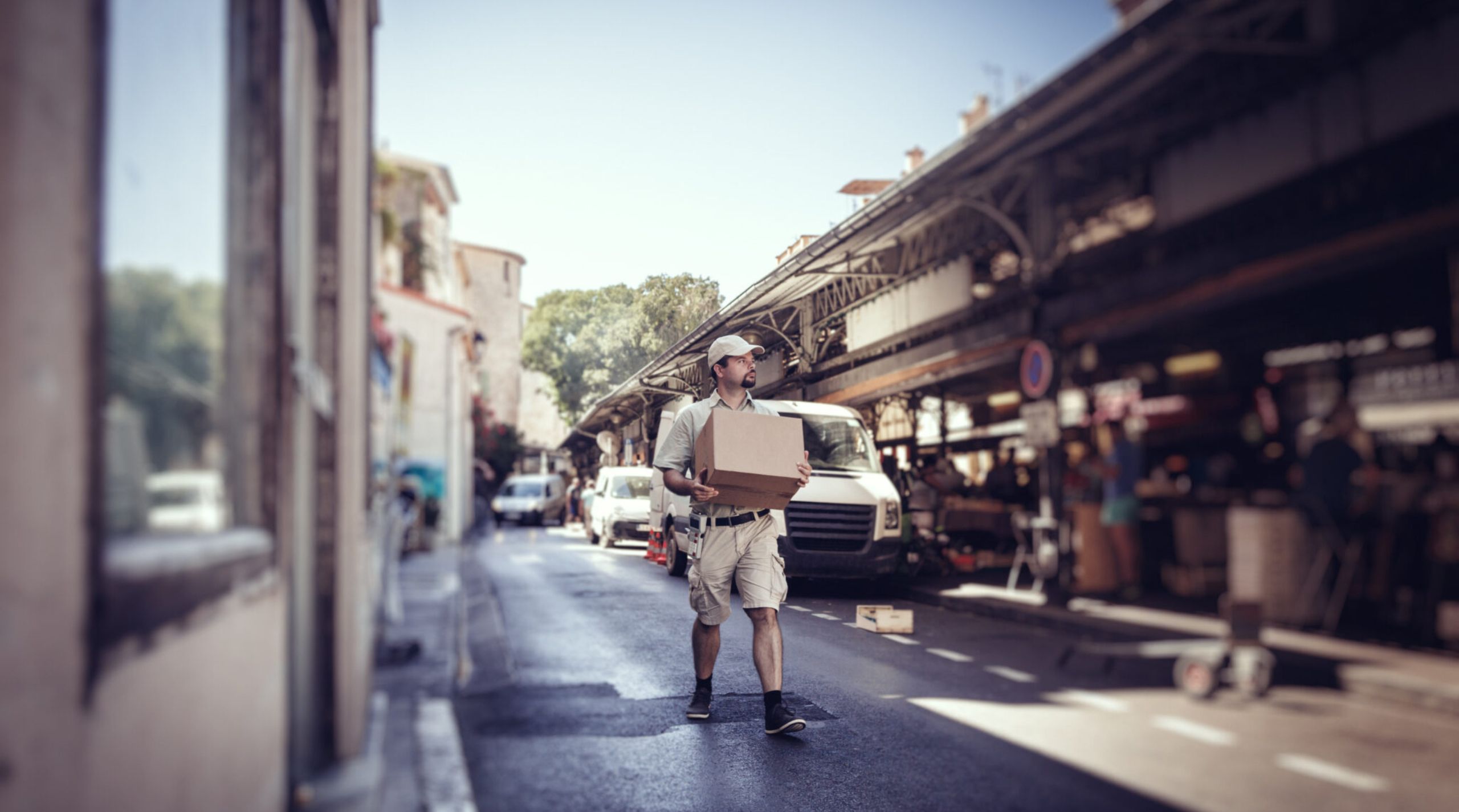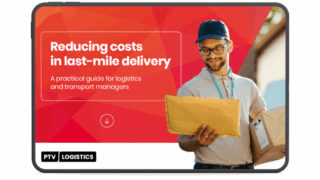It’s a regular weekday afternoon, and your phone buzzes with a delivery update. The notification says your package is “out for delivery”.
And you feel that familiar anticipation: the excitement of seeing your order come to life, fulfilling the promise you imagined when you first clicked, ‘Place Order’.
But hours go by, and the delivery window keeps shifting.
Behind the scenes, the logistics provider is juggling congested roads, high fuel prices, and unexpected driver shortages: all adding up to what businesses know as the hidden costs of last-mile delivery.
While most customers expect speed and flexibility, many companies are quietly absorbing rising costs that come with meeting those expectations. And it’s not just the big names – from local retailers to nationwide distributors, the pressure is building.
By leveraging innovative technologies, delivery companies can manage fuel expenses, prevent failed deliveries, and optimize their fleet operations. These logistics cost reduction strategies not only drive down costs but also improve customer satisfaction in an increasingly competitive market.
LAST MILE DELIVERY INSIDER
Hidden costs are quietly adding up: fuel, re-deliveries, route inefficiencies, and unpredictable delays. We’ve gathered expert insights and proven strategies to help you uncover what’s driving costs in your last-mile operations and how to address them smartly.
So, what is Last mile delivery?
Last mile delivery is the final step in getting a product from a warehouse or distribution center to the customer’s doorstep. Despite covering the shortest distance, the last mile delivery costs can account for a significant portion of overall logistics expenses.
While it may seem like a straightforward process, the truth is that this stage is where a majority of the cost inefficiencies lurk. The first step toward combating these cost inefficiencies is to identify them and find ways to address them.
Common unspoken last-mile delivery costs that businesses face, and how smart solutions can help reduce them
1. Inefficient route planning
It has been observed that UPS delivery trucks rarely take a left turn on the road. By following this unusual but interesting policy, the company has reportedly saved millions of gallons of fuel each year. While it may seem like a successful strategy initially, this is not feasible in the long term. Inefficient and speculative route planning can lead to higher fuel consumption, longer distances traveled, and wasted driver hours, which contribute to last mile delivery costs.
To counter this, many logistics teams are turning to more advanced methods like route optimization solutions, particularly when managing high volumes of deliveries. These solutions help reduce delays and improve delivery performance by factoring in time-dependent traffic patterns derived from historical data. This not only leads to more realistic route planning but also minimizes disruptions caused by peak hour congestion or recurring bottlenecks.
Consequently, leveraging strategies grounded in real-world data enables companies to make more informed, cost-efficient routing decisions, day after day.
2. Failed delivery attempts and re-deliveries
The pandemic led to a surge in online orders. But those weren’t the only numbers on the rise because simultaneously, the number of failed deliveries spiked as well.
Fast forward to today, and that still poses a major hidden cost.
With each failed delivery, more fuel is consumed, more time is spent, and vehicle wear increases – driving up the hidden costs of logistics. From the driver’s perspective, this could take a toll in the form of rising labor costs and overall reduction in productivity.
In addition to all the costs mentioned, when a package isn’t delivered after several attempts, it needs to be returned to the sender, contributing to both operational and administrative costs.
Reducing failed delivery attempts is one of the key logistics cost reduction strategies that companies can implement to streamline last mile deliveries.
One way to tackle this is by improving delivery accuracy: aligning drop-off times more closely with customer availability through smarter, data-informed route planning. Incorporating time window preferences and predictive traffic data helps reduce the risk of missed deliveries.
3. High fuel and vehicle maintenance costs
Given the entire delivery process, it’s safe to assume that delivery vehicles require regular maintenance.
When we consider the movement of one delivery vehicle – every stop, acceleration, and idling in traffic causes inefficient fuel use. In urban areas with heavy traffic or residential zones with frequent stops, fuel consumption tends to spike, driving up last mile delivery costs. To reduce the hidden costs of logistics, companies are increasingly turning to electric vehicles (EVs), which offer significant fuel savings and long-term cost reductions.
For instance, Amazon found a sustainable solution when the company invested in 100,000 electric delivery vehicles from Rivian, aiming for a more sustainable and cost-efficient delivery solution.
EVs are an excellent alternative for delivery companies. In fact, a report states that electric SUVs can save an average of $1,800 in annual operating costs compared to conventional SUVs over a 10-year period in Germany, and about $1,600 per year in the United States.
Once a company makes this shift to electric vehicles, a wise move is to invest in a smart EV simulator. Turning to a dependable innovative solution like PTV EV Truck route planner enables users to calculate optimized routes for over 400 digital twins of electric trucks, explore real-world scenarios and reduce operational costs.
Did you know?
PTV EV Truck route planner has been recognized with the Eco Performance Award 2024, a testament to its real-world impact and innovation.
You can test it for free here: PTV EV Truck Route Planner (free version)
4. Unpredictable customer behavior
Even the greatest psychologists fall short when it comes to understanding why humans do the things they do. You’re only a delivery company.
It’s no surprise then that a staggering amount of expenses are hidden here, slipping through the cracks. For example, if a customer isn’t home and reschedules a delivery, the driver may have to return to the same location later, resulting in increased fuel consumption, more labor hours, and extra vehicle wear. These unpredictable factors significantly contribute to the hidden costs of logistics. Additionally, unpredictability can cause delays that affect other customers on the same delivery route, leading to dissatisfaction and potential financial losses from compensation or missed delivery deadlines.
Although you can’t predict customer behavior, what you can control is having a flexible and dynamic delivery management system in place. For instance, through PTV Axylog, companies can provide real-time updates to customers, allowing them to adjust delivery preferences while minimizing disruptions. On the other hand, PTV Optiflow offers intelligent route optimization that adapts to last-minute changes, ensuring deliveries are rescheduled efficiently without impacting other customers, helping businesses reduce extra costs caused by unpredictability.
Also read: Common customer complaints and how to solve them
5. Overhead of multiple delivery options
The best way to understand this cost is by looking at a challenge a company faced first-hand:
When Instacart expanded its delivery options, it significantly improved customer satisfaction but, in turn, also introduced substantial overhead costs. Initially, they offered a standard delivery window, but due to increasing customer demand, they introduced multiple delivery options such as one-hour, two-hour, and same-day deliveries.
Due to this, Instacart had to hire more gig workers and expand its fleet to handle these new options, especially for one-hour deliveries, which required faster response times and more frequent trips. This led to increased fuel usage, more vehicle maintenance costs, and added labor expenses, especially when deliveries needed to be rerouted or rescheduled. To manage all these tasks reasonably, Instacart eventually had to raise prices for certain delivery tiers to cover the added costs. This expansion also led to significant last mile delivery costs and logistical challenges, which in turn resulted in the need for more vehicles, diverse delivery routes, and the management of multiple time windows.
For companies facing similar complexities, logistics cost reduction strategies such as fleet optimization and data-driven delivery planning can help mitigate the financial impact.
By utilizing data-driven solutions like dynamic route planning and predictive analytics, businesses can minimize the hidden costs of logistics and optimize their last mile delivery operations efficiently.



